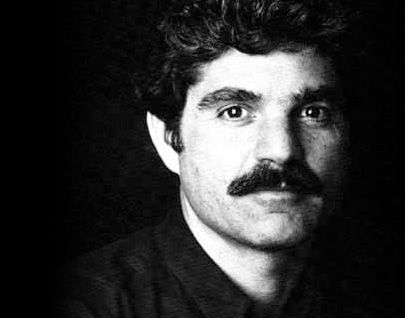1975
Ned Steinberger, a graduate of the Maryland Institute of Art with a BFA in sculpture, begins working for Thronet Industries designing industrial furniture sharing space with bass luthier Stuart Spector in a Brooklyn, NY woodworking co-op.
1976
Ned Steinberger designs NS models for Stuart Spector.
1977
Several prototypes made of graphite reinforced epoxy are manufactured.
1979
Ned designs the L2 in Brooklyn, NY. The L2 is introduced at the summer show of the National Association of Music Merchants. Three prototypes are sold at The Guitarman to John Entwistle (The Who), Tony Levin (King Crimson) and Andy West (The Dregs).
1980
Steinberger Sound Corporation is founded. Ned Steinberger is granted patent on the design of his L2 bass.
1981
At the Frankfurt Musik Messe, the L2 leaves the music world amazed over its design. The L2 is awarded the coveted Industrial Designers Excellence Award from the Industrial Designers Society of America (ISDA). Time Magazine declares the L2 one of the Five Best Designs of 1981.
1982
Steinberger wins the Reinforced Plastics/Composite Award from The Society of The Plastics Industry Inc. Demand for the L2 exceeds supply by 300%. The GL Prototype Guitar is introduced. Steinberger wins Award of Excellence from Materials Engineering.
1983
Steinberger Sound relocates to Newburgh, NY. The larger facility allows Steinberger to increase production.
1984
PBS' "Enterprise" airs its On Key episode featuring Ned Steinberger and his guitars. The feature refined XL-2 and GL-2 are completed. The updated versions replace the L2 and GL-P. The TransTrem is introduced at the Winter show of the National Association of Music Merchants. The TransTrem is the first "pitch-bending" mechanism which permits an individual controllable change rate so that all strings can be set to maintain pitch relationships throughout tremolo travel.
1985
New electronics manufactured by Henry Zajac of HAZ Labs in Washington, New Jersey are introduced to the line. Ned Steinberger introduces the S-Trem. With the S-Trem, both tremolo and fixed bridge operation are available in one guitar. Roland Controller circuitry is first offered in the L Series. This circuitry (made exclusively for Steinberger) incorporates the latest in pitch to signal processing technology. The U.S. Information Agency chooses the XL2 bass to exemplify the "Best in Contemporary American Design". The agency's Product of Design show will tour Eastern Europe for three years.
1986
The GL3T, an EMG SA three pickup version of the GL with TransTrem, is introduced. The GL4T, with EMG SA, SA, 89 pickups and TransTrem, is introduced.
1987
The GM Series is created with the inspiration of Mike Rutherford, Roger Griffin and Geoff Banks. The classically styled maple body features a double cutaway and contrasting binding. The Bass TransTrem is introduced. The first bridge enabling chords and intervals to remain perfectly in tune during tremolo operation. Steinberger Sound is purchased by Gibson Guitar Corp.
1988
The DB Bridge is introduced. The TransTrem is now available in a left-handed version. Ned agreed to design this version at the request of Elliot Easton (The Cars). The collaboration between Steinberger and luthier Steve Klein creates the GK Series guitar. The ergonomic bodies by Klein are matched with Steinberger hardware and electronics.
1990
The XQ Bass is introduced. The XQ features an ergonomically designed maple body. The first model is the Q4.
1991
New GM and XM bodies with sleeker profile and redesigned heel section are introduced. The neck on the XM is changed to a "thinner" version as is used on the XQ bass. The '7' configuration (humbucker-single-humbucker) is made available on the GL and GM guitars.
1992
Steinberger relocates to Nashville, TN, where Steinberger designs are still made today. The exacting standards of excellence that Ned applied to his first instruments go into every Steinberger. The individuals at the Steinberger facility are a talented team of craftspeople, artisans and technicians dedicated to making superb instruments for demanding musicians, both professional and amateur. We take pride in creating the world's most innovative stringed instruments. Steinberger introduces the “Spirit by Steinberger” line. The Spirit line features most of the same basic features as the graphite Steinbergers including the double-ball tuning system, 40:1 ratio fine tuners, R-Trem locking tremolo system, headless construction, Steinberger hardware and ergonomic design. However, while the Steinbergers featured a graphite neck, Spirit by Steinbergers feature 3-piece hard maple, through-neck construction (GT and XT series) or hard maple, bolt-neck construction (GU and XZ series) making them much more affordable.
